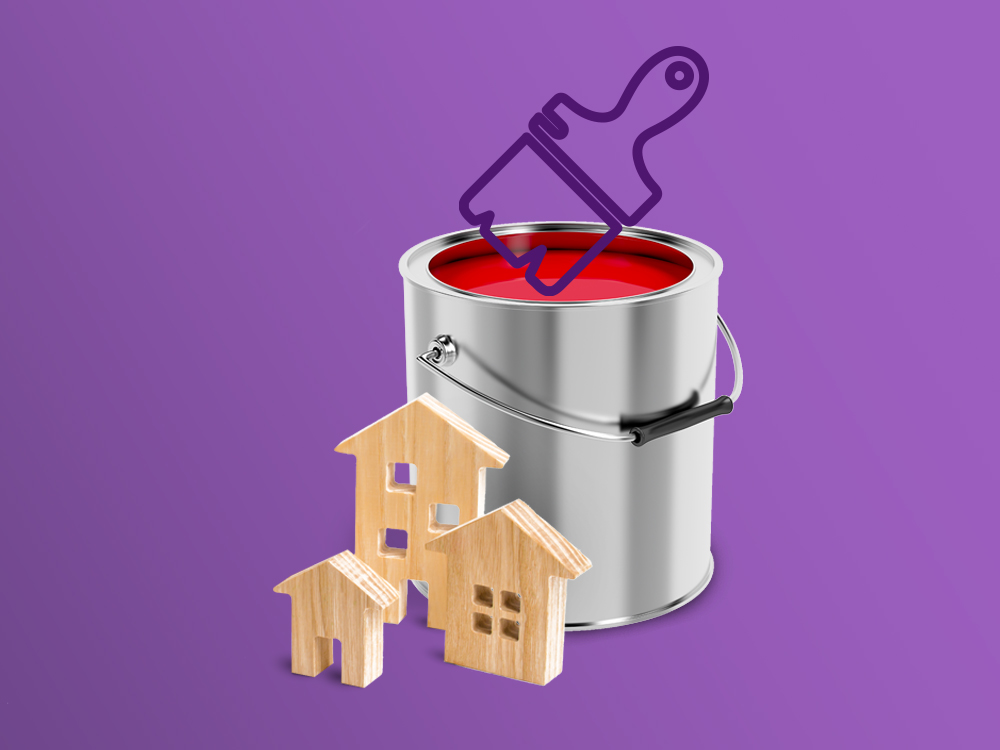Guide to property flipping
The perfect property flip takes a matter of weeks, involves minimal work to the building – maybe a couple of coats of paint – with an uplift from purchase to sale of tens of thousands of pounds after all costs.
In the real world, property flipping is an altogether tougher, more risky, lengthy and laborious business. You can still make serious profits, but it’s not something to take lightly, or think about as a ‘get rich quick’ scheme. In the UK, around 10,000 properties a year are flipped, yielding an average profit of £50,000.

Here’s a rundown of the key issues to bear in mind:
1. Location is key
The phrase ‘choose the worst house on the best street’ is made for property flipping. Where a location has cachet and inbuilt demand, it makes your job much easier. You’re looking for an undervalued asset, so focus your search on areas where there are plenty of examples of market value. In a street of £1 million homes, look for one selling for £700,000.
Dig into the details of similar properties. Have they completed extensions recently? What is the average floor area? Is there a ‘ceiling price’ on the district? Would you need planning permission to complete any potential renovations?
Look for properties that have been on the market for some time. Their owners may accept a lower offer. And properties ‘in need of modernisation’, as agents tend to put it.
Spend time on Google Street View or simply driving around an area to get a feel for the standard of properties. Arrange viewings with agents. Ask questions as you go along, to gauge what other buyers will find important.
2. Condition is crucial
A project that starts off as a quick fix can suddenly turn into a long-term money pit if you’re unprepared or unlucky. Pay attention to the state of the roof: any missing tiles or sagging beams could mean it needs replacing. Check for signs of subsidence, infestation or damp.
Have a survey completed by an RICS-registered professional ahead of purchase. They’ll advise you on the value of the property and what you can do to improve it.
The more work you need to do on a property, the less suitable it is for flipping. Keep in mind that, in this of all businesses, time is money. If you’re financing the flip through borrowing, you’re paying interest. Even if you’re paying cash, you’re tying up capital that could be profitably deployed elsewhere. Your own time could be better spent.
3. Do the maths
A helpful rule of thumb with property flipping is the 70 per cent guide. This means calculating the after-repair value of the property, subtracting the cost of repairs, then paying 70 per cent of this figure.
So if you reckon you can sell a property for £500,000 and it’s going to cost you £50,000 to do it up, you should pay no more than £315,000 for it (£500,000 - £50,000 = £450,000 x 70% = £315,000).
Add up the potential costs of the flip: surveyors, architects, builders and contractors, materials, finance, insurance, waste disposal, estate agency fees, Stamp Duty Land Tax, Capital Gains Tax, Income Tax. Add 10-20 per cent to your budget to cover surprises.
Assess how the market is performing and its prospects for the coming months. Are there any changes that could affect its direction, such as interest rate changes, revised tax laws or government incentives? An ideal market for flipping is where property prices are rising sharply, but it can still be profitable in a static or declining market. If owners are in a hurry to sell, you can still achieve a successful flip through buying below market rates and selling again quickly.
4. Renovation tips
When flipping properties, the secret is to keep it simple and fast. Buyers are most attracted by kitchens and bathrooms, so if you’re going to renovate, focus on these. A new kitchen takes between four and eight weeks to fit, and costs between £7,000 and £15,000 on average. A bathroom takes between three and six weeks and costs £6000 to £10,000.
Because they take much longer (up to 16 weeks), loft conversions and property extensions are less popular with property flippers. They’re also much more expensive (up to £50,000), so only take them on if you’re sure that they’ll add more value than they cost. Extensions may also require planning permission, meaning additional time and cost.
Experts advise you to retain period features such as fireplaces and coving, use classic colour schemes rather than bold or dramatic décor, watch out for asbestos in materials (it must be disposed of safely) and aim for a high Energy Performance Certificate rating, which will make the property more attractive to buyers.
If you want to know which renovations will add value and which ones won't then check out our home improvements that increase energy efficiency and its value infographic.
5. DIY or contractors?
The most prolific and successful property flippers are tradespeople who can slot renovations in between their regular work as carpenters, plumbers, electricians or builders (sometimes all of the above). Even if your skills only extend to painting walls, this can still help to minimise costs and speed up the process. Spending time on site means you’re in closer contact with contractors, so you can oversee their work and check it for quality or faults. They can also recommend other contractors for different aspects of the job.
6. Final thoughts
Average house flips take four months from purchase to sale, so you need to have plenty of spare time to oversee the process. Around two-thirds of flipped properties are bought with cash, but that still leaves several thousand deals each year needing finance.
Auctions and repossessions can be fertile sources of flippable properties. In these cases, you’ll need to move quickly to secure the deal.
“Property flippers often seek out bridging finance for their transactions, because it allows them to secure auction deals, or to buy properties where the seller is in a hurry,” says Stephen Clark at bridging finance company Finbri. “Bridging suits the pace and purpose of flipping, delivering speed and flexibility just when it’s needed.”





